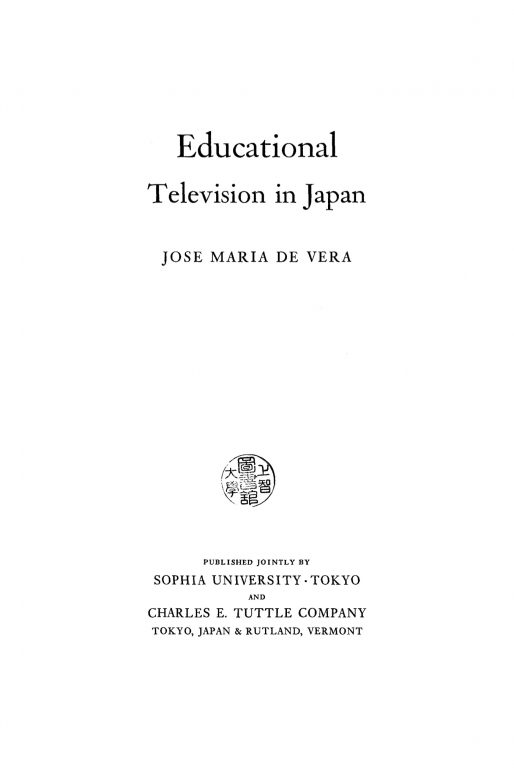Educational Television in JapanJosé María de Vera
Monographs (1967) pp. 1–140
The Japanese Broadcasting System is frequently referred to in American publications as “government-owned,” “governmental broadcasting network,” or by other loose denominations which reveal an inaccurate knowledge. Cultural differences as well as the language barrier have contributed toward keeping the Japanese broadcasting system in the shadows, practically unknown in spite of its gigantic dimensions and importance. Only recently, the American TV industry and the U.S. Department of State have shown interest in an exchange of programs between Japan and the U.S.A. Mr. Frank Stanton, President of the Columbia Broadcasting System, in his address to the delegates to the “Second United States-Japan Conference on Cultural and Educational Interchange,” identified the following as serious problems in the proposed exchange:
A lack of knowledge of educational television programs available in Japan for broadcast in the United States and vice versa;
B the complexity of customs regulations and brokerage arrangements;
C the complexity of copyright clearance procedures;
D the cost of dubbing and subtitling;
E the lack of information on Japanese and American audience reaction, particularly school audiences;
F the shortage of translations of papers bearing on technical and research problems.
The present work is an effort to provide the information and the interpretation that seem to be missing in the area of Japanese educational television. The goal is to furnish a study both descriptive and analytical.
1967. 140 pages.
Hardback. [Out of print]
